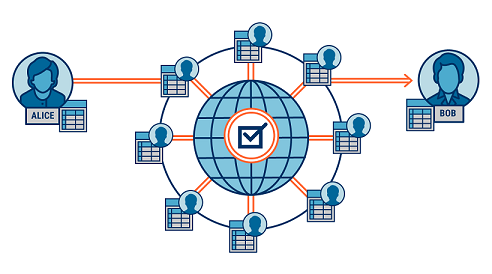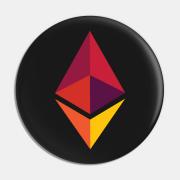Blockchain for Dummies
Blockchain is a kind of database (something that stores information for digital purposes). It stores data in a way that chunks are “chained” together by appending new data to the next block, connecting everything in chronological order, hence the name. Blockchain is simply the network on which Bitcoins and many other cryptocurrencies use to STORE THEIR CRYPTOCURRENCY.

To better understand this article on blockchain, you are recommended to read our previous article first: Cryptography for Dummies.
Blockchain, as we briefly mentioned before in the article on cryptocurrencies, is a type of database.
Most cryptocurrencies, including ones you might know like Bitcoin, Etherium, and Dogecoin, use blockchain as their database. In this article, we’re focusing on the use of blockchain in cryptocurrencies. Therefore, we’re going to answer one question: “What is the purpose of using blockchain?”

Blockchain, as explained before, is a type of database where information is “chained” together in “groups” or “blocks.” All kinds of information can be chained together on a blockchain but for crypto, most of it is transaction records. How do you make transaction records valid, unchangeable, and dependable?
Cryptocurrencies use a type of database that is “decentralized.” This means that anything entered is permanent and cannot be changed. Crypto like Bitcoin with decentralized blockchain have permanent transaction records that are also made public. This is huge for keeping cryptocurrencies a valid item of exchange.
However, a problem with blockchain is that with cryptocurrencies as popular as Bitcoin, transactions can often take very long.

The way blockchain plays a role in cryptocurrencies involves a series of steps of authentications and transactions. In our Cryptocurrency for Dummies article, we talked about how mining coins was essentially people dedicating some of their computing power to help authenticate transactions and being rewarded with coins in return.
When a transaction is entered to be queued, it goes into one of these computers part of the “mining” process (called nodes). The node joins up with other nodes and performs authentications in a process that transfers coins from one coin address to another. When a currency has a lot of people exchanging it and fewer people mining, blockchain transactions can take a lot of time.
Depending on the cryptocurrency’s algorithms, this process could be faster. For example, Dogecoin has 1-minute blockchain intervals.
However, a problem arises. Remember how Bitcoin has a cap of 21 million coins that can be mined? If the blockchain process essential to crypto counts on people joining in on the mining process, what happens after all possible coins are mined?
Well, obviously miners will stop receiving coins as rewards. They will earn only from transaction fees. As long as the coin’s value is high, transaction fees will also be high and there will still continue an incentive to support the blockchain.



Comments
Brilliant and Easy to Understand. Another great post! Keep it up!!
- Reply
PermalinkAdd new comment